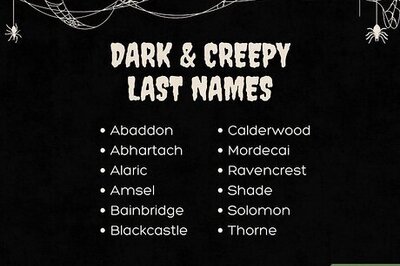
views
Are scarecrows effective at scaring birds and animals?
Scarecrows work when you move them around and use other deterrents. Stationary scarecrows that you leave propped up in your field or garden may get rid of crows, deer, and other plant-eating creatures for a while. Eventually, though, they'll get used to them and approach your plants anyway.
Scarecrows aren't as effective at protecting large crops or fields. In those cases, you either need a lot of scarecrows or another type of bird deterrent to cover more surface area. Modern farmers' solution is to spray bad-smelling or tasting bird and deer repellents on their crops and install fences to keep animals out.
Which birds and animals do scarecrows work on?
Most birds avoid scarecrows initially because they're afraid of humans. Crows, ravens, sparrows, and other small birds that eat or play with plants and seeds will typically forgo a tasty snack from your crop if they think there's a person close by. Birds that are comfortable around people, like pigeons, won't be fooled or deterred by a motionless scarecrow for long.
Deer who aren't used to humans will also shy away from scarecrows. However, if a deer is accustomed to seeing people in their environment, you may need to combine the scarecrow with another deterrent, like motion, loud noises, or an odor-based repellant.
How to Scare Birds and Animals Away Using a Scarecrow
Hang clothes loosely on the scarecrow to create a motion deterrent. Everyone is familiar with scarecrows clothed in old straw-stuffed shirts and pants, but empty clothes move more in the wind. Movement scares birds and animals, so leave out the straw when you make the scarecrow and let the clothes hang off it.
Add bright, reflective materials to distract pests. Birds – especially crows and ravens – get distracted by bright, shiny things such as Mylar balloons, colorful flags, and bird tape. Rather than pick at your plants, they will flock to the scarecrow instead.
Hang chimes, pie pans, or cans to scare pests away with noise. Wild animals and birds dislike loud sounds, which are startling and may indicate a predator is nearby. Dangle your noisemaker from the scarecrow frame and let the wind shake them throughout the day and night.
Spray repellant on your scarecrow to make it smell or taste bad. When birds and animals like deer near the area, they'll be put off by the sight of the scarecrow and its terrible odor. Even if the scarecrow doesn't fool them, the repellant will act as a second line of defense.
Move the scarecrow every other day to protect larger areas. If you keep the scarecrow in one place, you're teaching pests to simply avoid that spot. Reposition it on a regular schedule to show birds and animals that they're not welcome anywhere in your field or garden.
Set up motion-sensor scarecrows for hands-off deterrence. These battery or solar-powered devices automatically activate when they detect something moving. Popular motion sensor scarecrows include bird-shaped sprinklers that spray pests with water, owls that scare away squirrels and other small creatures, and loud ultrasonic sound emitters.
Install a laser scarecrow defense system to stop birds from descending. A recent study by scientists at the University of Florida and the University of Rhode Island found that birds tend to avoid damaging fields that are protected by laser-emitting scarecrows. It may seem drastic, but hey, this is the 21st century!
Alternative Ways to Scare Birds and Animals Away
Use a bird cannon to scare birds up to 5 acres away. Bird cannons are devices that emit sonic blasts that are as loud as an ambulance siren or a jackhammer. The sound covers 5 acres and scares birds, so it's definitely effective – and humane, as well! However, if neighbors live close by or you want to protect a small garden in the city, avoid using the bird cannon so you won't cause a disturbance.
Cover plants and crops with mesh deer netting to keep pests out. Deer netting is made with a fine mesh that prevents birds, rodents, and small animals from sampling the foliage. Surround your plant beds or crop crows with the netting and nail it into place on nearby posts, trees, or bushes.
Fly drones over your fields to frighten birds in flight. A study by Washington State University researchers showed that birds are scared by the whir of drone blades as they fly. The researchers believe a system of drones could patrol fields 24/7 and be equipped with predatory bird noises to drive birds away long-term.
Do Scarecrows Work FAQs
Do scarecrows work on hawks? Yes, providing you move the scarecrows around periodically and combine them with other bird deterrent methods, like repellants, motion, and loud noise.
Do scarecrows work on deer? Yes, deer stay away from scarecrows because they think they're humans. However, if the scarecrow never moves, the deer may overcome its fear and venture into the area it's protecting.
Do scarecrows work on pigeons? Scarecrows may work on pigeons temporarily, but these city birds are so used to humans that you may need to use other deterrents to make the scarecrow truly work on them.
Do scarecrows work on squirrels? Yes. Scarecrows like owl decoys typically scare these fluffy rodents away (owls are one of the squirrel's natural predators).
Do scarecrows work on sparrows? Yes. Like other small birds, sparrows are easily startled by movement and things that make loud sounds, and you can equip a scarecrow to perform both functions.

















Comments
0 comment